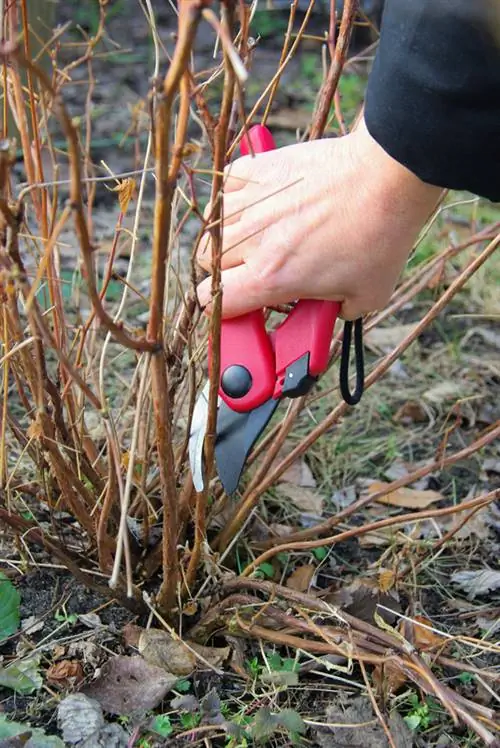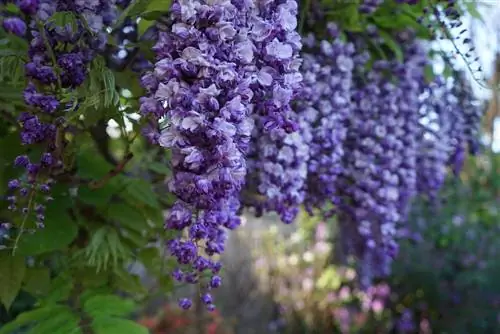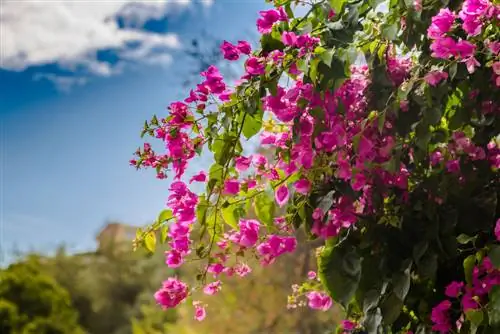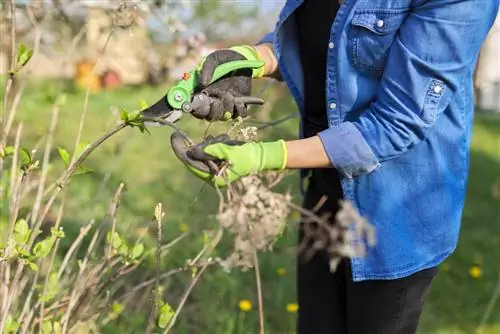- Author admin [email protected].
- Public 2023-12-16 16:46.
- Last modified 2025-01-23 11:20.
The decorative and very lush flowering hydrangeas are an ornament for every garden. However, in order for the flowering bush to actually bloom, it must only be cut a little.
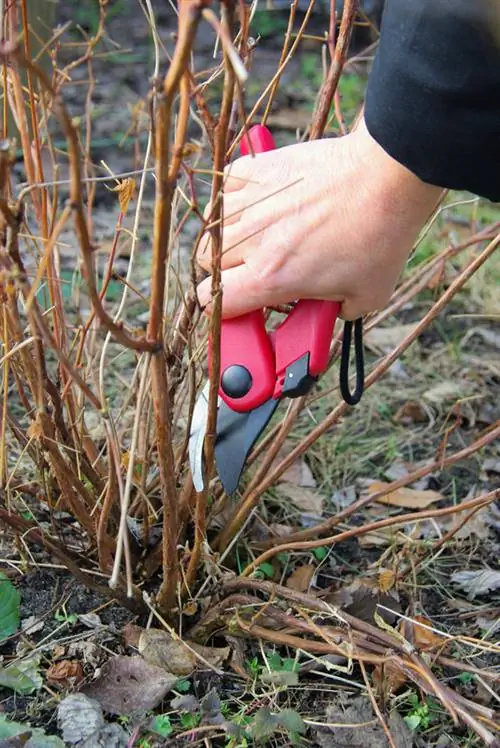
How do I cut a hydrangea correctly?
Plate hydrangeas should be cut in spring by removing spent inflorescences and cutting off frozen shoot tips. Dead wood and crossing shoots and branches should be cut off directly at the base. Rejuvenation pruning is necessary every two to three years, in which half of the oldest shoots at the ground are cut out.
Cut hydrangea in spring if possible
With the exception of panicle and viburnum hydrangeas, almost all types of hydrangeas should be pruned as little as possible. The plate hydrangea is also one of these species that only forms flower buds on the older shoots. Regular pruning would remove the buds that were already formed last fall and thus prevent flowering. For the same reason, gardeners should leave the spent flower stalks on the plant, because the newly formed buds are located directly under the old inflorescences. In addition, the dead parts are used as winter protection for the new buds. That's why it's better not to use secateurs until early spring.
Annual pruning measures
In addition to removing spent inflorescences, you can carry out other maintenance cuts at the same time.
- First remove the dead inflorescences.
- Cut as close as possible to the new buds.
- Be careful not to accidentally cut these off.
- No new ones will form this year.
- Now cut off frozen shoot tips.
- Dead wood is cut out directly above the ground.
- Thin the shrub by removing crossing shoots.
- Also crossing branches.
- If possible, do not leave any stubs, but cut directly at the base.
- The branches and shoots must not be crushed, otherwise their supply of water and nutrients will suffer.
- Only use sharp and clean tools when cutting.
If you are unsure whether a shoot is actually dead or not, to be on the safe side, do the acid test: Lightly scratch the bark of the branch in question with your fingernail. If the wood underneath is green, the branch is alive and does not need to be cut. Brown, withered wood, on the other hand, can be removed.
Perform a rejuvenation cut every three years
You can carry out the maintenance pruning described above every year and in this case save yourself the rejuvenation pruning that would otherwise be required every year. Without this, the hydrangea would age, produce fewer and fewer flowers and ultimately only offer a pitiful appearance. Basically, it is enough to carry out the necessary rejuvenation pruning about every two to three years, whereby you should cut out about half of the oldest shoots directly at the ground.
Tips & Tricks
Severely old hydrangeas that have not been cut for a very long time (so to speak “hopeless” cases) are radically cut down to around 15 to 20 centimeters above the ground. As a rule, these specimens recover after about two to three years and sprout again. Help with plenty of water and good fertilization, and winter protection shouldn't be missing either.

